Real quick now: What are the first things that come to your mind when you think of the Texas frontier?
Cowboys? Check.
Rangers? Check.
Indians? Check.
Mexicans? Check.
But how about paleontologists? Did you think about them, too?
Fossil hunters tended to stick to the background, picking their way through the Texas bone beds, but they were very much part of the frontier. Texas was a magnet for 19th-century collectors. Universities and museums on the east coast, even in Europe, hired them to augment their collections. Mix the paleontologists up with the usual cast of characters and you sometimes had a great recipe for violence and murder.
In her book, Death of a Texas Ranger (2014), Cynthia Leal Massey successfully stirs a paleontologist into the frontier murder recipe. Her book deals with what was once the coldest case on the San Antonio court docket (37 years to case closure!) and features all the traditional characters listed above. The culinary result was a winner. Death of a Texas Ranger took the 2015 Will Rogers Silver Medallion Award for Best Western Nonfiction and the 2015 San Antonio Conservation Society Publication Award.
Cynthia Leal Massey joins us for an interview today. Welcome, Cynthia!

Death of a Texas Ranger actually chronicles two homicides, one of a Ranger in 1873 and another of a postmaster in 1878. Tell us first how the Ranger died.
On the morning of July 9, 1873, Minute Men Texas Ranger Troop V of Medina County was breaking camp at a site in northwest Bexar County, Texas, near the settlement of Helotes, getting ready for a scout. Private Cesario Menchaca came out of the bushes and confronted Sgt. John Green (a German immigrant originally born Johann Gruen). After a few tense words, Sgt. Green moved toward Menchaca, who had a rifle in his hands, and Menchaca shot him, killing him on the spot.
John Green’s company was a colorful mixture of Texans, Germans, and Mexicans. Did Germans and Mexicans often serve as Rangers?
During the early days of the Ranger companies, Mexicans did serve in a sort of multicultural unit; however, it was not the norm. The Ranger company that John Green served in was composed of ranchers and farmers from northwest Bexar County and southeast Medina County. A mixture of Germans, Mexicans (or Texicans), and Anglos, lived in this region. These men had something in common–they wanted to protect their families and their livestock.
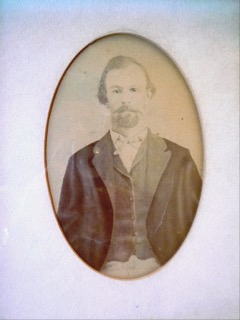
Menchaca fled to Mexico. The U.S. and Mexico already had an extradition treaty at the time of the killing. Why didn’t it help Texas extradite Cesario Menchaca from Mexico?
Apparently, no one was able do the work necessary to get the extradition paperwork together.
How did the Green homicide end up becoming the coldest case on the San Antonio court docket?
The United States has no statute of limitations on murder. The 1873 indictment charge was murder, so by necessity, it moved forward on the docket, despite no activity in his apprehension. In 1897, Deputy Will Green, the victim’s son, petitioned the court for a new Bill of Indictment, since the sitting judge was eager to remove old cases from the docket. Deputy Green was successful and with a new bill of indictment and case number, the murder case remained on the docket. However, because of circumstances regarding the outcome of the extradition request, the case remained on the docket until Menchaca’s death in 1910, 37 years from the initial indictment.
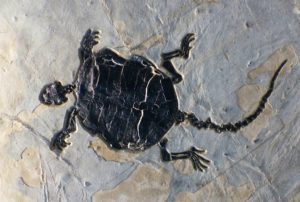
How did a turtle fossil lead to a fossil hunter killing the postmaster?
Gabriel Wilson Marnoch, a frontier naturalist, lived in Helotes. He was a neighbor of the Green family and was allegedly involved in the Green killing. Marnoch collected specimens and fossils and mailed large boxes of his finds to scientific institutions around the country. He was a frequent visitor to the Helotes Post Office, where Carl “Charles” Mueller was postmaster. In the spring of 1877, Marnoch received correspondence from Professor Joseph Leidy of the Academy of Natural Sciences in Philadelphia, indicating that one of Marnoch’s packages to him, which contained “turtle remains,” had arrived in a state of “ruins.” Marnoch confronted the postmaster about the mishandled package, demanding recompense, which elicited bad feelings on both sides. This ignited what came later.
In Death of a Texas Ranger, you write that post-Civil War Texas was a magnet for paleontologists. Why?
The mid-nineteenth century is often referred to as the Age of Darwin, a nod to British naturalist Charles Darwin, who in 1859 and 1871, respectively, published his seminal scientific works, The Origin of Species and The Descent of Man. Texas was still very much a frontier, with virgin landscape, and those interested in the natural sciences descended upon Texas in troves. According to Samuel Wood Geiser, author of Naturalists of the Frontier, “several hundred men of science labored in Texas in the pioneer days.” Marnoch’s father, Dr. George Frederick Marnoch, a graduate of the Royal College of Surgeons in Edinburgh and the University of Edinburgh, was a contemporary of Charles Darwin and likely shared a medical class with him. Gabriel mentioned this many years later, saying that he’d had “considerable correspondence” with Darwin and fellow naturalist Thomas Huxley, although said letters have yet to surface.
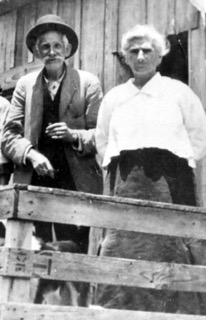
Gabriel Marnoch collected for Professor Edward Drinker Cope at the Haverford College in Pennsylvania. Cope’s feud with paleontology Professor Othniel Marsh of Yale is now the stuff of legend. Can you tell us about their clashes?
There are several good books about the feud between Cope and Marsh. In a nutshell, the paleontologists were involved in something now called “The Bone Wars.” This was a period of intense fossil hunting and discovery in the mid-nineteenth century. Trying to outcompete each other, they resorted to spying, counter-spying, bribery, theft and even destruction of bones to remain “on top.” Marsh’s charges of errors, distortion, and fraud against Cope and the professor’s countercharges were published in the spring and summer of 1873, in The American Naturalist, which Cope finally purchased in 1877 to stop further allegations from being published.
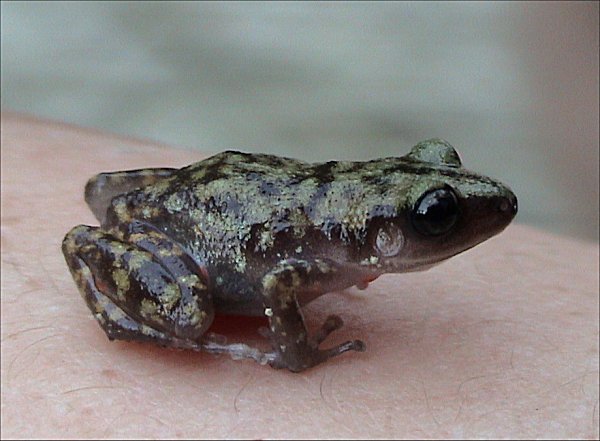
How did Marnoch help cement Cope’s reputation?
Marnoch hosted Cope in Helotes and other Texas environs on a two-week quest for new fossils in the fall of 1877. After that, Marnoch, whom Cope hired as a field correspondent, began sending specimens to the paleontologist. Marnoch discovered several new specimens, one a frog that Professor Cope said was “a new genus of Cystignathididoe.” Cope gave the cliff chirping frog the scientific name Eleutherodactylus (Syrrhophus) marnockii, in honor of his field correspondent. A few other Marnoch discoveries named by Cope: the Texas Banded Gecko, Short-Lined Skink, and the Barking Frog.
Why were the murder charges against Marnoch dismissed?
Marnoch killed the postmaster in March 1878. He was indicted for murder on April 4, 1878. In November of that year, the jury could not agree on a verdict and a mistrial was declared. At his second trial May 17, 1879, the jury convicted him of murder in the second degree and sentenced him to confinement in the penitentiary for twenty years. His attorneys kept him out of prison while they appealed his murder conviction and the appeals court remanded his case back to the district court for a new trial. The judge believed that the jurors weren’t given appropriate directions regarding self-defense. His lawyers were able to get continuances due to their inability to recall several important witnesses who’d moved out of the country. The murder case was finally dismissed in 1887.
How did John Green’s son try to reopen his father’s case decades later?
In 1897, Deputy Will Green learned that the 37th District Court of Bexar County was reviewing old cases on the docket and that caused him to seek a new indictment. The original indictment for murder against Cesario Menchaca was filed in October 1873. Deputy Green was able to assemble several of his father’s old Ranger comrades before a new Grand Jury, and was successful at obtaining a new indictment on May 26, 1897. This enabled him to seek and obtain an extradition requisition from the Governor of Texas.
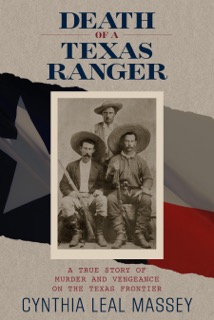
Thanks, Cynthia!
A fascinating twist at the end of the book concerns a discovery about the paleontologist. He may be had more to do with the death of a Texas Ranger than Will Green originally thought. But I won’t spoil the ending for you – you need to read the book yourself.
Cynthia Leal Massey is working on a screenplay adaptation of Death of a Texas Ranger, and with luck, we might get to see it out the big screen. Fossils and felonies should make a great mix. I’ll be there if the film comes out. If you go too, grab an extra large bag of popcorn and come sit with me.
Literature on point:
Cynthia Leal Massey, Death of a Texas Ranger: A True Story of Murder and Vengeance on the Texas Frontier (Guilford, Connecticut: TwoDot, 2014).
Charles H. Sternberg, The Life of a Fossil Hunter (1st ed. Henry Holt & Co., 1909, reprint, Bloomington, IN: Indiana University Press, 1990) [Another account of a 19th-century paleontologist collecting for Cope, in part in Texas; considered a classic among paleontologists].

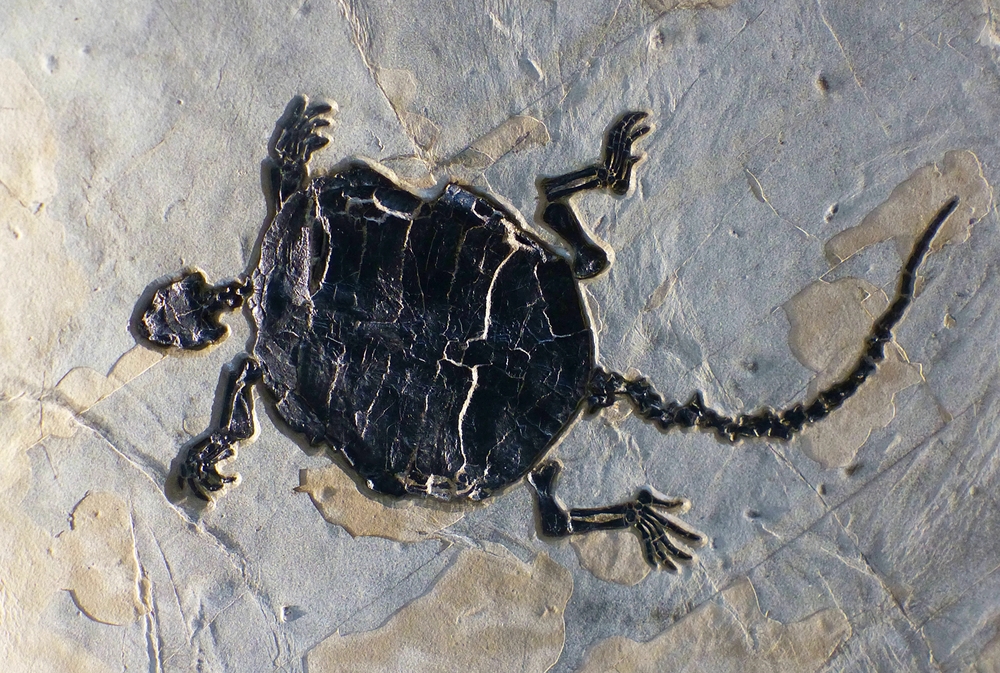



I’ve always enjoyed Cynthia Massey’s articles in the Helotes Echo and now in the Helotes Highlights. I’ve read and own a couple of her books on Helotes, as well. I’m a children’s author and was inspired by Mrs. Massey’s articles on Apache Indians who roamed this area to research the Lipan Apaches. I coupled it with research on the San Antonio missions and wrote a book called LOST APACHE, published in November 2017. I would like very much to send a copy to Mrs. Massey but don’t know where to send it.
She may contact me at the email below if interested.
Death of a Texas Ranger is the only book I’ve read by Cynthia Massey, but it’s very good — better than I expected when I purchased the book. Before I can share your Email with her (your Email won’t display with the comment), I need your written permission due to data protection laws. Check your Email inbox. Thanks for commenting, Jennie, and good luck with your book. It sounds interesting.